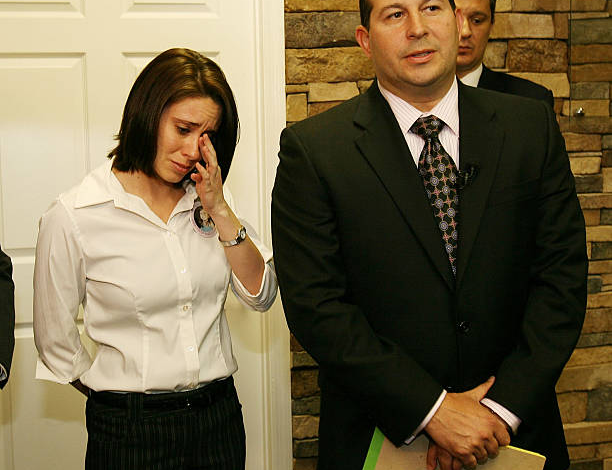Accessible Legal Help: How Contingency Fees Work for Injury Victims

Getting hurt in an accident creates enough stress without worrying about legal bills. Many people avoid seeking justice because they assume hiring an attorney requires thousands upfront. The reality is quite different. Most injury cases operate under a payment system that removes financial barriers completely.
A personal injury attorney in Alaska works under contingency fee arrangements that make legal representation accessible to everyone. This payment structure means you pay nothing unless your case succeeds and you are awarded due rewards. The attorney receives compensation only when they recover money for your injuries. This arrangement levels the playing field between injured victims and insurance companies.
Understanding Contingency Fee Structures
What Contingency Fees Mean for Clients: Contingency fees eliminate the traditional hourly billing model that creates financial pressure on reluctant clients. Instead of paying hundreds per hour, clients agree to share a percentage of any settlement or court award, when received. This percentage gets determined before work begins, creating transparency and predictability.
Standard Percentage Ranges: Most contingency agreements range from 33% to 40% of the total recovery amount. Simple cases that settle quickly often fall toward the lower end. Complex cases requiring extensive litigation may reach a higher percentage. The exact amount depends on case complexity and potential trial requirements.
No Recovery, No Fee Guarantee: The core principle protects clients from financial loss if their case fails. When an attorney cannot secure compensation, they receive nothing for their work. This arrangement motivates lawyers to pursue only viable cases and fight harder for maximum recovery amounts.
See also: Full body scanners: enhancing security and respecting privacy
Financial Benefits of Contingency Arrangements
Immediate Access to Legal Expertise: Quality representation becomes available regardless of current financial status. Accident victims can hire experienced attorneys immediately after their injury occurs. This timing proves critical since evidence preservation and witness interviews work best when conducted promptly after accidents happen.
Reduced Financial Risk for Families: Medical bills and lost wages already strain family budgets after serious injuries. Contingency fees prevent additional financial pressure from legal costs. Families can focus on recovery instead of worrying about mounting attorney bills throughout their case.
Alignment of Interests: Attorneys working on contingency share the same goal as their clients – maximizing compensation. This shared interest creates powerful motivation for thorough case preparation and aggressive negotiation. The lawyer’s payment directly depends on achieving the best possible outcome for the client.
Case Expenses vs. Attorney Fees
Understanding Cost Differences: Attorney fees represent payment for legal services, while case expenses cover specific costs like medical records, expert witnesses, and court filing fees. These categories get handled differently in contingency agreements. Some attorneys advance all expenses, while others require client payment for certain costs.
Typical Case Expenses Include:
- Medical record retrieval and analysis fees
- Expert witness testimony and consultation costs
- Court filing fees and administrative charges
- Investigation expenses including accident reconstruction
- Deposition transcription and document preparation costs
Expense Recovery Methods: Many attorneys advance case expenses and recover them from settlement proceeds. This approach removes another financial barrier for clients. The attorney takes on the financial risk of case expenses, demonstrating confidence in the case’s potential success.
When Contingency Fees Apply
Personal Injury Case Types: Most accident-related injuries qualify for contingency representation. Car accidents, slip and fall incidents, medical malpractice, and workplace injuries commonly use this payment structure. The severity of injuries and potential compensation amounts influence attorney acceptance of contingency cases.
Case Viability Assessment: Attorneys evaluate several factors before accepting contingency cases. Clear liability, significant damages, and the defendant’s ability to pay for all matters. Insurance coverage limits and available assets affect whether cases justify the investment of time and resources required for success.
Time Investment Considerations: Complex cases requiring years of work need substantial potential recovery to justify contingency representation. Simple cases with quick resolution timelines become more attractive under this payment structure. The time-to-recovery ratio affects attorney decision-making on case acceptance.
Maximizing Your Contingency Agreement
Negotiating Fee Percentages: Standard percentages aren’t always final. Cases with clear liability and strong evidence may qualify for reduced percentages. Discussing fee structures during initial consultations helps establish realistic expectations and potentially better terms for straightforward cases.
Understanding Settlement vs. Trial Rates: Many agreements specify different percentages for settlements versus trial verdicts. Cases settling before trial often carry lower percentages than those requiring courtroom litigation. This structure reflects the additional work and risk involved in taking cases through trial proceedings.
Clarifying Expense Responsibilities: Detailed discussions about case expenses prevent surprises later. Understanding which costs get advanced by the attorney and which require client payment helps with financial planning. Some attorneys offer expense advancement for all costs, while others limit their financial exposure to specific categories.
Red Flags in Fee Agreements
Excessive Percentage Demands: Fees exceeding 40% raise concerns about attorney practices. Standard market rates provide fair compensation without exploiting client vulnerability. Shopping around helps identify reasonable fee structures and avoid attorneys charging excessive percentages for standard services.
Hidden Fee Structures: Vague language about additional charges creates potential problems. Clear agreements specify exactly what the percentage covers and what additional costs might apply. Transparency in fee discussions indicates professional practice standards and client-focused service approaches.
Upfront Payment Requirements: Legitimate contingency arrangements never require substantial upfront payments for attorney services. While some case expenses might need immediate payment, attorney fees should remain completely contingent on case success. Demands for advance fee payments suggest questionable practices.
Conclusion
Contingency fee arrangements democratize access to quality legal representation for injury victims. This payment structure removes financial barriers that prevent people from seeking justice after accidents. The alignment of attorney and client interests creates powerful motivation for achieving maximum compensation. Understanding how these agreements work helps injured people make informed decisions about their legal representation. Don’t let financial concerns prevent you from exploring your legal options after an injury – consult with a qualified attorney to discuss your case and available payment structures.



